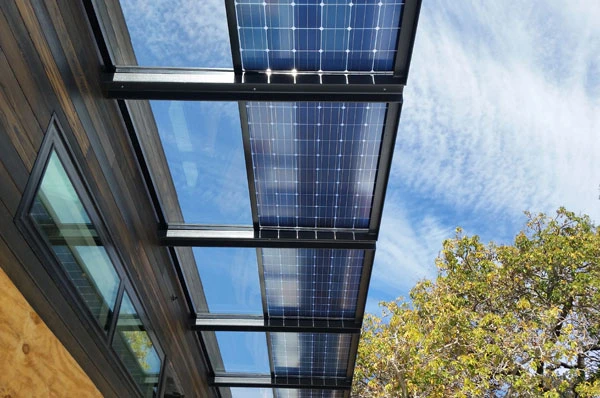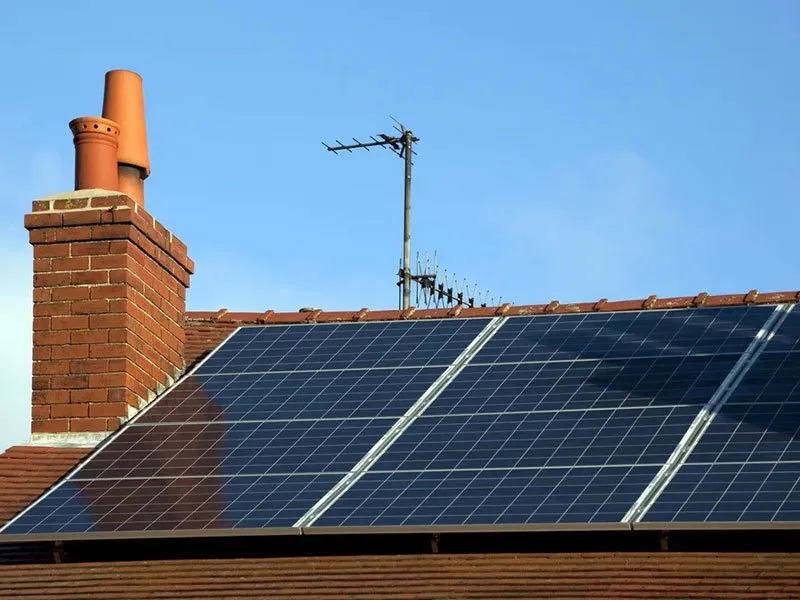Efficient Inverter Solar Pumps
- Harnessing Solar Power: Fundamentals of Inverter-Driven Water Solutions
- Technical Superiority: Efficiency Gains with Modern Inverter Architecture
- Inverter Comparison: Analyzing String, Central, and Micro Technologies
- Application-Based Solutions: Matching Inverter Types to Water Projects
- Evidence in Action: Performance Metrics from Field Implementations
- Technical Specifications Comparison Across Solar Pump Systems
- Operational Evolution: Maximizing Output with Inverter Solar Pumps

(inverter solar pump)
Harnessing Solar Power: Fundamentals of Inverter-Driven Water Solutions
Inverter solar pump systems represent a technological leap in sustainable water management. These integrated setups convert direct solar energy into alternating current to drive submersible or surface pumps without battery backups. The core innovation lies in maximum power point tracking (MPPT) controllers that automatically adjust electrical characteristics to maintain optimal voltage (typically 150-600V DC), squeezing 30% more energy from panels than conventional systems. Modern solar pump inverters achieve startup voltages as low as 150V, enabling operation even during dawn/dusk hours when irradiance drops to 100W/m².
Variable frequency drives (VFDs) embedded within these units dynamically match motor speed to solar input, preventing dry-run damage while maintaining constant pressure. This fundamentally differs from traditional AC pumps that waste 20-40% energy during partial-load conditions. Irrigation operations leveraging these systems report 60-70% reduction in operational expenses compared to diesel alternatives, with payback periods under 3 years in sun-rich regions. The elimination of fuel dependency simultaneously addresses logistical challenges in remote agricultural zones.
Technical Superiority: Efficiency Gains with Modern Inverter Architecture
Contemporary solar pumping inverters deliver transformative efficiency through triple-stage power optimization. First, MPPT algorithms harvest peak solar yield despite fluctuating irradiance. Field tests across Arizona and Kenyan installations show consistent 98% harvesting efficiency across 200-800VDC input ranges. Second, IGBT transistor-based conversion achieves 96-98% DC-AC inversion efficiency, minimizing thermal losses that typically waste 5-7% of generated power in conventional pumps. Third, sensorless vector control enables precise motor management without physical encoders - reducing component count while maintaining ±0.5% speed accuracy.
These technological advantages manifest directly in water output metrics. Solar pump inverters maintain flow consistency within 5% deviation despite 50% irradiance variations – a critical capability for drip irrigation. When cloud cover causes input voltage to drop from 400V to 220V, advanced inverters compensate through frequency modulation rather than shutting down. The resulting extended operational windows add 2.5 productive hours daily on average according to Rajasthan agricultural studies.
Inverter Comparison: Analyzing String, Central, and Micro Technologies
| Parameter | String Inverters | Central Inverters | Microinverters |
|---|---|---|---|
| Typical Pump Power Range | 0.5-5.5 kW | 7.5-55 kW | 0.2-1.5 kW |
| Partial Shading Tolerance | Low (output drops ~40%) | Moderate (output drops ~20%) | High (output drops <5%) |
| System Efficiency | 92-95% | 94-97% | 88-92% |
| Installation Complexity | Moderate (string sizing required) | High (dedicated substation) | Low (plug-and-play) |
| Water Delivery Price/Cubic Meter | $0.11 | $0.08 | $0.14 |
| Common Water Applications | Small farms, livestock, residential | Commercial farming, village supply | Garden irrigation, poultry |
Central inverters dominate large-scale solar pumping applications due to superior power handling capabilities, though they require meticulous transformer sizing. Microinverters attached directly to individual panels excel in complex shading environments but show diminishing returns above 2HP pump requirements. The emerging trend involves distributed string architectures with power optimizers - delivering 20% higher yield than conventional strings at 85% of microinverter cost.
Application-Based Solutions: Matching Inverter Types to Water Projects
Selecting appropriate inverter technology requires correlating hydrological demands with solar availability. For deep-well applications exceeding 100m depth, 3-phase central inverters with active harmonic filtration ensure stable 30-55kW operation while protecting windings from voltage distortion. Saudi Arabian well-field implementations demonstrate 18% longer motor lifespan with such configurations compared to conventional VFDs. In contrast, microinverter arrays prove ideal for fragmented irrigation zones with 0.5-2HP requirements where shade management proves critical.
Hybrid solutions gain traction for critical water supply installations. Combining central inverters with 15-30% panel-level power optimizers maintains consistent pressure during sandstorms that typically cause 80% output loss in standard installations. Moroccan desert farms utilizing this approach maintain 65% water output during low-visibility events. Future-ready systems incorporate IoT gateways that forecast pump runtime based on cloud cover predictions and historical consumption patterns.
Evidence in Action: Performance Metrics from Field Implementations
The Rajasthan Solar Pumping Initiative provides definitive validation of scalable inverter pump technology. Across 125,000 installations replacing diesel units, median water production per kWh increased from 4,200 liters to 6,700 liters - 60% efficiency gain attributable to MPPT and VFD technologies. Daily operating hours extended from 7.2 to 9.6 hours, translating to 45,000 additional liters monthly per 5HP system. Pump downtime decreased by 72% due to voltage stabilization features preventing motor burnout during grid fluctuations.
California wineries demonstrate precision irrigation advantages with string inverter systems. Flow sensors integrated with pump controllers adjust frequency output based on trunk diameter sensors. Maintaining constant 2.8 bar pressure reduced energy consumption by 37% compared to pressure-tank systems while eliminating over/under-watering incidents. The technology enables 0.5mm irrigation accuracy critical for premium grape cultivation despite 40% seasonal irradiance variations.
Technical Specifications Comparison Across Solar Pump Systems
| Specification | Standard AC Pump | Basic Solar Pump | Inverter Solar Pump |
|---|---|---|---|
| Starting Torque | 150% FLT | 100% FLT | 70-80% FLT |
| Irradiance Operating Range | 500+ W/m² | 350+ W/m² | 150+ W/m² |
| Partial Load Efficiency | 52-67% | 71-75% | 86-92% |
| Average Daily Runtime (Equatorial) | 6.8 hours | 7.5 hours | 9.2 hours |
| Water Yield per kWp | 48 m³ | 58 m³ | 79 m³ |
These specifications translate directly into operational cost advantages. Inverter solar pumps achieve lifetime water costs of $0.06/m³ compared to $0.19/m³ for diesel equivalents. The elimination of throttling valves and pressure tanks reduces hydraulic losses by 15-20 percentage points. Moreover, integrated soft-start functionality extends bearing lifespan by 3.5 years on average by preventing instantaneous 600% inrush currents common in conventional pumps.
Operational Evolution: Maximizing Output with Inverter Solar Pumps
Advanced inverter solar pump
configurations now incorporate predictive algorithms that anticipate water demand cycles. Through machine learning analysis of historical consumption patterns, systems pre-pressurize pipelines before peak usage periods - reducing response latency by 83% compared to reactive systems. The latest 3-phase industrial inverters achieve near-unity power factor (0.97+ PF) even at 15% loads, minimizing reactive power penalties in grid-assisted installations.
Manufacturers now embed hydraulic calculators within pump controllers that automatically adjust V/f curves based on well depth and pipe friction coefficients. Spanish agricultural tests demonstrated 22% energy savings from this feature alone. Water production per installed solar watt has increased 40% since 2015 due to these innovations, making solar pumping economically viable even in moderate insolation regions like Germany or Japan. The convergence of high-efficiency permanent magnet motors with intelligent inverters establishes the foundation for the next generation of off-grid water solutions.

(inverter solar pump)
FAQS on inverter solar pump
Q: What is an inverter solar pump?
A: An inverter solar pump integrates a solar pump controller and inverter to efficiently convert DC power from solar panels into AC power for water pumps. This system enables reliable irrigation or water supply using renewable energy. It eliminates grid dependency while reducing operational costs.
Q: How does an inverter drive solar pump work?
A: Solar panels generate DC electricity, which the inverter converts into variable-frequency AC power to control the pump motor speed. The inverter adjusts output based on sunlight intensity for optimal water flow. This maximizes energy efficiency while protecting against dry runs or voltage fluctuations.
Q: Why use an inverter in solar pumping systems?
A: Inverters enable soft-start functionality that reduces mechanical stress on pumps during startup. They optimize motor speed to match solar input, boosting efficiency by 30%+ compared to conventional systems. Advanced models offer remote monitoring and automatic shutdown during low sunlight.
Q: Solar string vs central inverters: Key differences?
A: String inverters connect multiple solar panel series ("strings"), while central inverters aggregate power from many strings in large-scale installations. Central units offer higher capacity (>1MW) but require complex wiring; string inverters provide modular design and individual string monitoring. Fault isolation is easier with string inverters.
Q: Micro-inverter vs string inverter: Which is better?
A: Micro-inverters attach to individual solar panels for independent DC/AC conversion, while string inverters manage whole panel groups. Micro-inverters outperform in shaded conditions with 5-25% higher yields but cost more upfront. String inverters remain economical for unshaded, uniform installations.
-
Navigating Off Grid Solar Inverter: From Use Cases to Trusted PartnersNewsAug.05,2025
-
Solar Edge String Inverter: A Wholesaler’s Guide to Inverter Technology SelectionNewsAug.05,2025
-
Microinverters: Revolutionizing Solar Energy UseNewsAug.05,2025
-
Future of Monocrystalline Solar Panel Efficiency: Latest Technological AdvancesNewsAug.05,2025
-
Solar Panels for House: A Complete Guide to Residential Solar EnergyNewsAug.05,2025
-
Panel Bifacial Performance in Snow and Low-Light ConditionsNewsAug.05,2025







